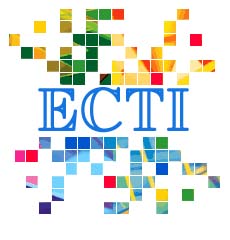MPTCP: How Can Route Diversity Improve the Internet Traffic?
Main Article Content
Abstract
This contribution aims to provide the fundamental basis of a new Transmission Control Protocol (TCP) designed for the next generation Internet. The TCP protocol is not capable to carry out all the growing traffic generated by the Internet as it leads to congestion and packet loss out of the quality of service specially required for critical connections. Moreover this behavior is accentuated in heavy load conditions. The Internet traffic becomes bursty and this trend is amplified as more participants contribute to generate data connections on a shared complex infrastructure. Therefore we focus on the design of a new protocol that aims to avoid or partially reduce the congestion appearance and the high variability of the Internet traffic. The stationarity of connection paths met on the Internet are judged responsible of the emergence of these characteristics. As a consequence a TCP-like protocol based on Multiple Paths (MPTCP) is suggested for a data transmission between two network entities in order to improve the QoS of the de¯ned connection. We propose there several algorithms that aim to extract multiple routes between two network components. This work is based on a theoretical modeling supported by simulations. Our network simulator is developed on top of the Scilab environment.
Article Details
This journal provides immediate open access to its content on the principle that making research freely available to the public supports a greater global exchange of knowledge.
- Creative Commons Copyright License
The journal allows readers to download and share all published articles as long as they properly cite such articles; however, they cannot change them or use them commercially. This is classified as CC BY-NC-ND for the creative commons license.
- Retention of Copyright and Publishing Rights
The journal allows the authors of the published articles to hold copyrights and publishing rights without restrictions.
References
[2] W. Willinger, V. Paxson and M.S. Taqqu, "Self similarity and Heavy Tails: Structural Modeling of Network Traffic," In A Practical Guide to Heavy Tails: Statistical Techniques and Applications. Birkhauser, Boston, pp. 27-53, 1998.
[3] T. Karagiannis, M. Faloutsos and R. Riedi, "Longrange dependence: now you see it, now you don't," In Proceedings of GLOBECOM02. Taipei, Taiwan, pp. 2165-2169, 2002.
[4] F. Melakessou, U. Sorger and Z. Suchanecki, "On The Road Towards The Comprehension Of The Internet Traffic Behavior: Simulation And Analysis Of An End-To-End Connection With NS-2," In
Proceedings of CNS'07. Norvolk, VA, USA, 2007.
[5] N. Larrieu and P. Owezarski. 2004. "Measurement based congestion control for improving internet QoS," Tech. Rep. LAAS-CNRS 04219,10p, 2004.
[6] S. Lee and M. Gerla, "Split Multipath Routing with Maximally Disjoint Paths in Ad Hoc Networks," In Proceedings of the IEEE ICC, pp. 3201-3205, 2001.
[7] I. Diaz, D. Epema and J. De Jongh, "Multipath routing and multiple description coding in ad-hoc networks: a simulation study," In Proceedings of the 1st ACM international workshop on Performance evaluation of wireless ad hoc, sensor, and ubiquitous networks, PE-WASUN '04, isbn 1-58113-959-4, pp. 46-51, 2004.
[8] T. Nguyen and S. Cheung, "Multimedia streaming using multiple TCP connections," In Proceedings of IPCCC'05, pp. 215-223, 2005.
[9] S. Bohacek, "Performance Improvements Provided by Route Diversity in Multihop Wireless Networks," In IEEE transactions on Mobile Computing, (Vol. 7, no. 3), pp. 372-384, 2008.
[10] V. Bui and W. Zhu, "Improving Multipath Live Streaming Performance with Markov Decision Processes," In Proceedings of ISCIT'07, pp. 580-585, 2008.
[11] M. Mathis, J. Semke and J. Mahdavi,"The Macroscopic Behavior of the TCP Congestion Avoidance Algorithm," In Computer Communications Review, (Vol. 27, no. 3), 1997.
[12] J. Andren, M. Hilding and D. Veitch, "Understanding End-to-End Internet Traffic Dynamics," Submitted to Globecom '98. (Sydney), 1998.
[13] L. Guo, M. Crovella and I. Matta, "TCP Congestion Control and Heavy Tails," Tech. Rep. BUCSTR -2000-017, Computer Science Dept - Boston University, 2000.
[14] A. Veres and M. Boda, "The Chaotic Nature of TCP Congestion Control," In Proceedings of IEEE INFOCOM'00, pp. 1715-1723, 2000.
[15] W. Feng and P. Tinnakornsrisuphap, "The Failure of TCP in High-Performance Computational Grids," In Proceeding of High-Performance Network and Computing Conference SC00, Dallas, TX, 2000.
[16] W. Feng and P. Tinnakornsrisuphap, "The Adverse Impact of the TCP Congestion-Control Mechanism in Heterogeneous Computing Systems," In Proceeding of International Conference on Parallel Processing ICPP00, pp. 299-306, 2000.
[17] M. Fisk and W. Feng, "Dynamic Adjustment of TCP Window Sizes," Tech. Rep. Los Alamos Unclassified Report (LAUR) 00-3221, Los Alamos National Laboratory, 2000.
[18] http://www.scilab.org/contrib/index_contrib.php?page=displayContribution&fileID=977
[19] J. Leguay, M. Latapy, T. Friedman and K. Salamatian, "Describing and Simulating Internet Routes," In Proceeding of IFIP NETWORKING 2005, LNCS 3462, pp. 659-670, 2005.


